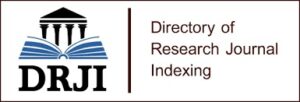TO OPTIMIZE THE STEEL FIBER CONCRETE PROPERTIES BY THE ADDITION OF FLY ASH AND SUPERPLASTICIZER
Workability is an important aspect of concrete; it decides the performance of concrete most critically when it has steel fibers in the case of self-consolidating properties. The optimization of the workability of steel fiber-reinforced concrete (SFRC) was conducted using fly ash and a full range of superplasticizer additives inducing workability improvement to SFRC. Steel fibers are known to improve the strength and durability of concrete; however, they bring along inconveniences where workability is seriously affected. Across the board, varying percentages of steel fibers (1, 2, and 3% by total weight of concrete) were studied. A very well-known supplementary material Fly ash was also varied (3%, 5%, and 8% of the cement weight) on how to improve workability. Different dosages of superplasticizer were added to see the result. The most among all of them is 2% steel fiber, which gives us high strength. The study tries to find the best balance between workability and physical properties through systematic experimentation and analysis. Findings revealed that workability decreased with an increase in steel fiber content, and compensating methods had to be incorporated. Fly ash showed much effect on both workability and other physical properties. On the contrary, superplasticizers had a promising effect on the workability of the concrete mix by improving flow and handling. The information here would receive help from these findings on the synergistic effects of combinations of steel fibers, fly ash, and superplasticizer with respective outputs on the workability and physical properties of SFRC. This complements concrete technology in terms of advancing strategies of improving workability against the application benefits of steel fiber reinforcement and supplementary additives.
KEYWORDS: Steel Fiber Reinforced Concrete (SFRC), Workability, Superplasticizer, Fly Ash




















